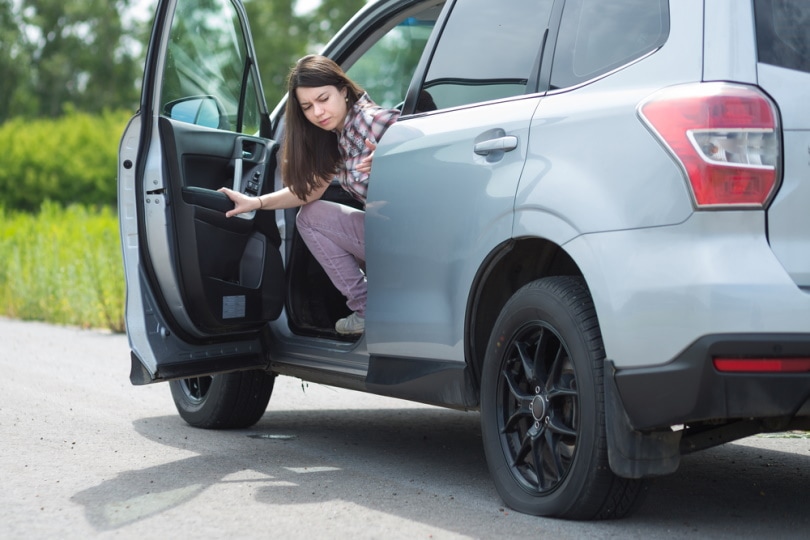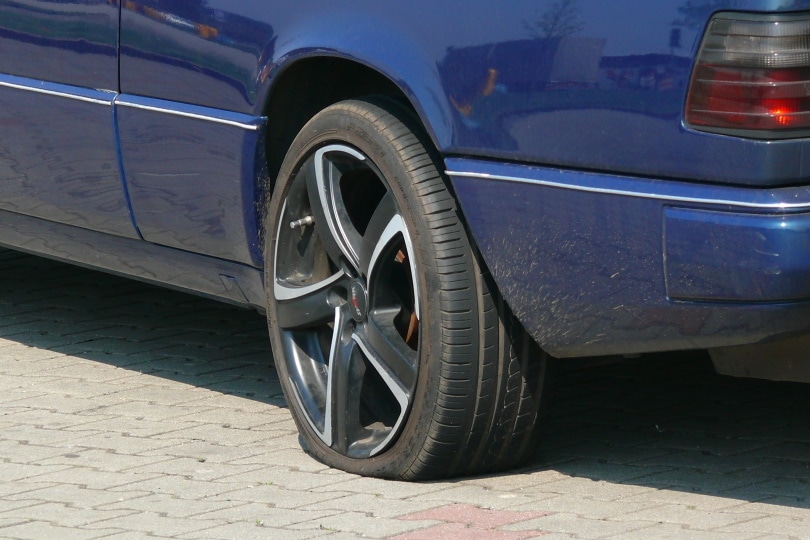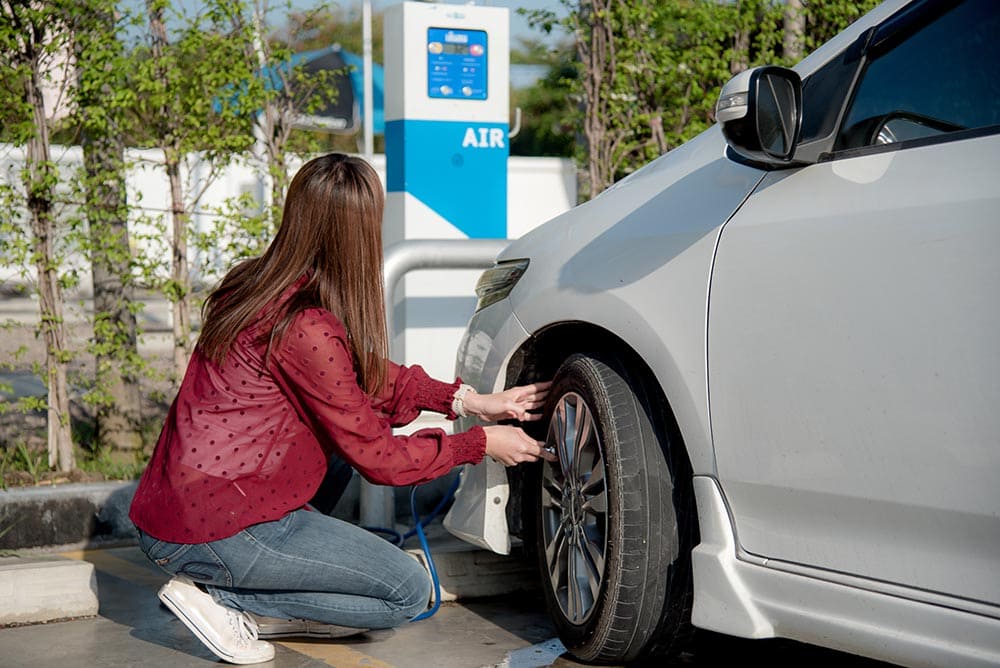Can You Plug a Run-Flat Tire? Advantages, Disadvantages & FAQs
-
Ed Malaker
- Last updated:

Many manufacturers add run-flat tires to their cars to improve dependability. These tires help make your vehicle more reliable by enabling you to continue driving on a flat tire, so you don’t have to stop immediately to fix it. However, many people don’t understand how these tires work and want to know if it’s possible to plug them once they go flat. The short answer is yes. That said, you can plug some run-flat tires but not all, so keep reading to learn more about these modern wheels.
What Is a Run-Flat Tire?
Run-flat tires are self-supporting tires that use reinforced sidewalls to support the vehicle if the wheel loses pressure. Most will allow you to continue driving for up to 50 miles after air pressure is lost, so you can make it home or to a garage instead of having to fix the tire yourself on the side of the road.

Run-Flat Tire Advantages
- The primary advantage of a run-flat tire is that you can continue to drive on it after it loses air pressure. This advantage can give you more peace of mind when allowing a child or another loved one to use your car. It will also come in handy if you get a flat tire during a rainstorm or when it’s snowing.
- Another advantage of a self-supporting run-flat tire is that it will remain more stable if you experience a blowout. Blowouts frequently cause automobile accidents because the sudden loss of tire pressure will send the vehicle in a new direction and make it difficult for the driver to steer. A run-flat tire will support the weight of your car, enabling you to maintain control and avoid an accident.
- Vehicles that use run-flat tires don’t typically have a spare tire or jack in the trunk. Without these items, you will notice a decrease in vehicle weight, which can help improve gas mileage and increase power.
- Another benefit of the absence of a spare tire and jack is that you have more room in the trunk, so you can take more items with you on vacation.

Run-Flat Tire Disadvantages
- There is no spare tire or jack in the trunk, so if you go beyond the limits of your run-flat tire, you can find yourself stuck on the side of the road with no options other than calling a tow truck.
- You can still have a blowout if you drive on a run-flat tire too long once it loses pressure. Once the tire starts to break down, it can destabilize your car.
- Since the tire’s sidewalls are reinforced and sturdy, it can be difficult to tell how much air is in the tire without manually checking it or relying on your car’s internal computer.
- The hard reinforced sidewalls can lead to a rough ride, but some manufacturers try to offset this with a softer suspension.
- Run-flat tires are more expensive than traditional tires, and you usually need to replace them two at a time.
- Less than 20% of all modern vehicles have run-flat tires, so it can be challenging to find them if you don’t live in a heavily populated area.
- Manufacturers may use soft rubber on run-flat tires to offset the hard reinforced sides and provide a smooth ride. However, this rubber will wear down faster, requiring more frequent tire changes.
Can I Plug a Run Flat Tire to Repair It?
You might be able to plug a run-flat tire if the puncture isn’t on the reinforced sidewalls and the tire is relatively new. It’s much less likely that you will be able to plug it if the hole is on the reinforced sidewalls. Statistics show that you are twice as likely to need a new tire after receiving a puncture than a traditional tire.
Summary
It’s possible to plug a run-flat tire depending on where the puncture is, but it’s just as likely that you will need to replace it. Many people also point to several other problems, like the weight of the tire and the reinforced sidewalls making it difficult to tell when your tire needs air until it’s too late. However, the peace of mind knowing that you won’t get stuck on the side of the road in bad weather makes these tires more than worth it for many people, especially if you are getting older.
Featured Image Credit: ZephyrMedia, shutterstock
Contents
